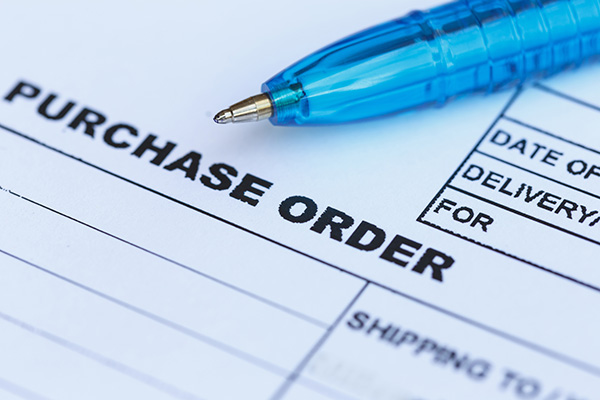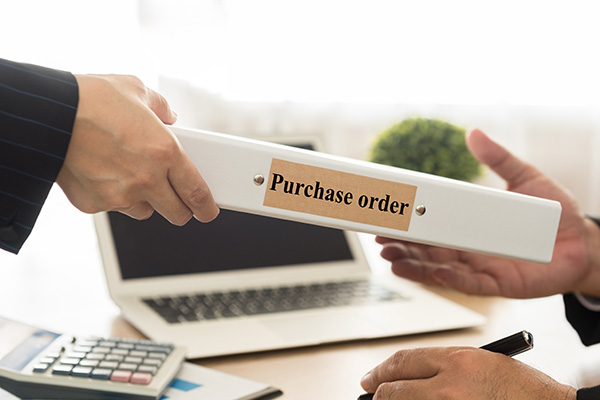
Purchase Orders and Transition to Factoring
As businesses increasingly turn to Purchase Order (PO) Finance to meet the upfront costs of fulfilling large orders, astute factoring brokers can seize a unique prospect for earning double commissions. The pivotal moment occurs when these financed purchase orders seamlessly transition into factoring arrangements upon successful order fulfillment. This transition not only facilitates the swift collection of receivables but also opens the door for brokers to earn additional commissions on both the initial PO financing and the subsequent factoring of invoices. In this realm of financial synergy, factoring brokers play a crucial role in providing comprehensive solutions that not only address immediate working capital needs but also optimize cash flow throughout the entire transaction lifecycle.
Purchase Orders and Transition to Factoring
Purchase Order (PO) Finance is a specialized form of short-term funding that provides businesses with the necessary capital to fulfill customer purchase orders. This type of financing is particularly useful for companies that face cash flow constraints or lack sufficient working capital to cover the costs of producing or acquiring goods for large orders.
Here’s how Purchase Order Finance typically works:
Customer Purchase Order:
- A business receives a large purchase order from a customer but may not have the financial resources to fulfill it.
Assessment of the Purchase Order:
- The financing provider evaluates the creditworthiness of the customer and the feasibility of fulfilling the order.
Issuance of Letter of Credit or Guarantee:
- The finance provider issues a letter of credit or some form of guarantee to the supplier or manufacturer. This serves as a commitment to pay for the goods needed to fulfill the purchase order.
Supplier Payment:
- With the letter of credit or guarantee in hand, the supplier or manufacturer is assured of payment and can proceed to produce or procure the necessary goods.
Goods Shipped to Customer:
- Once the goods are ready, they are shipped directly to the customer.
Invoice Issuance:
- After the goods are delivered, an invoice is generated to the customer for the total order amount.
Payment to Finance Provider:
- The customer pays the invoice amount directly to the finance provider.
Repayment and Fees:
- The finance provider deducts its fees and any related costs, and the remaining funds are forwarded to the business.
Purchase Order Finance is beneficial for businesses that engage in the production or distribution of goods and need upfront funds to fulfill large orders. It allows these businesses to take on substantial orders that they might not have been able to fulfill otherwise due to cash flow constraints. Additionally, it provides a solution for businesses that operate on thin profit margins and cannot afford to tie up their working capital in inventory.
It’s important to note that Purchase Order Finance is distinct from traditional loans, as the financing is specifically tied to fulfilling a particular purchase order rather than general business operations. Additionally, the terms and fees associated with Purchase Order Finance may vary depending on the financing provider and the specific details of the transaction.
Transition to Factoring
Purchase Order (PO) Finance and factoring often work hand-in-hand, with PO Finance covering the upfront costs of fulfilling an order and factoring addressing the subsequent stage of invoicing and payment collection.
Here’s how the transition from Purchase Order Finance to factoring typically occurs:
Purchase Order Finance:
- As previously explained, PO Finance helps businesses secure funding to cover the costs of producing or acquiring goods to fulfill a specific purchase order.
Goods Delivery and Invoicing:
- After the goods are delivered to the customer, an invoice is generated for the total order amount. At this point, the business has successfully fulfilled the order.
Transition to Factoring:
- The business, having delivered the goods and issued the invoice, may face a gap in cash flow while waiting for the customer to make the payment. Factoring companies step in at this stage.
Factoring the Invoice:
- The business sells the invoice (accounts receivable) to a factoring company at a discount. The factoring company provides an immediate advance, typically covering a significant percentage (e.g., 70-90%) of the invoice value.
Payment Collection:
- The factoring company takes over the responsibility of collecting payment from the customer. When the customer pays the full invoice amount, the factoring company deducts its fees and remits the remaining funds to the business.
Combining Purchase Order Finance and factoring provides a comprehensive solution for businesses engaged in fulfilling large orders. PO Finance ensures the necessary funds for production, while factoring addresses the working capital needs during the invoicing and payment collection period. This integrated approach helps businesses manage cash flow effectively and navigate the financial challenges associated with fulfilling substantial orders, especially in industries with longer payment cycles.
